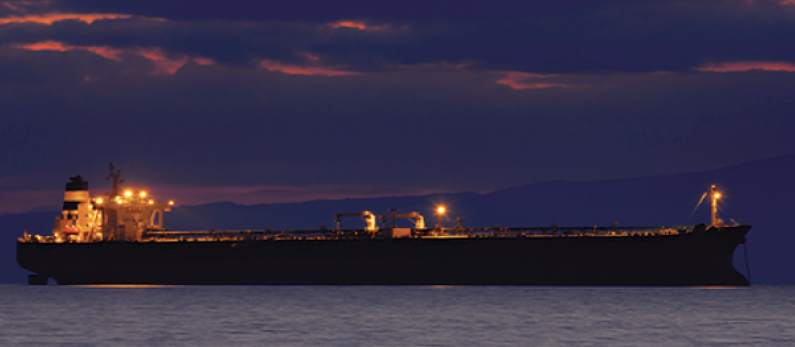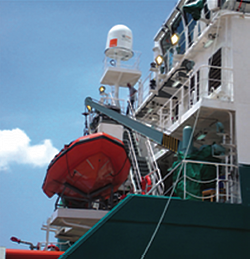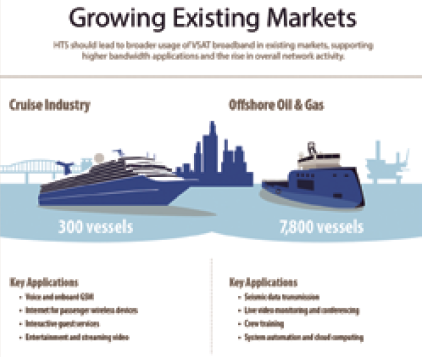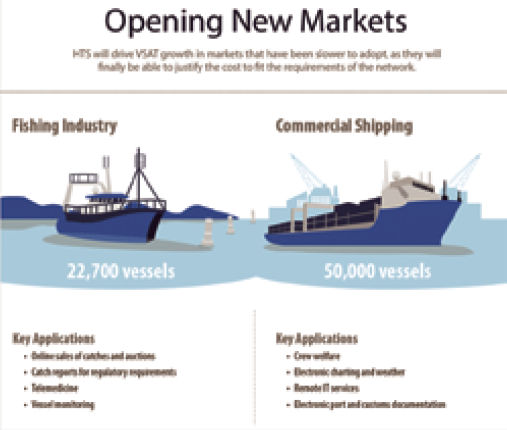Mr. Bettinger joined iDirect as the Director of Hardware Engineering in 1996 and acquired the responsibility of all hardware and software development as the firm’s Vice President of Engineering in 2002.

In 2005, Bettinger became Chief Technology Officer and is now responsible for the oversight of all technology decisions within iDirect. He drives the strategic direction for product development, technology alliances, as well as mergers and acquisitions. Mr. Bettinger currently serves on the Board of Directors for the Global VSAT Forum and is an active member of the Telecommunications Industry Association, IEEE and the IPv6 Forum.
Previous to iDirect, Mr. Bettinger was a senior member of the technical staff at Hughes Network Systems in the Satellite Networks Division. Mr. Bettinger is a graduate of Virginia Tech with a Masters of Science degree in Electrical Engineering and has been awarded six patents in the area of satellite communications.
SatMagazine (SM)
We have enjoyed a number of “conversations” with you over the past years and, as we are focusing in on maritime in this issue, please enlighten us as to what factors have been limiting the adoption of VSAT broadband in maritime in recent years?
David Bettinger
When you look at a market like maritime, and its need for high-speed communications, VSAT broadband plays an enormous role. Segments of maritime such as cruise, offshore oil and gas, and super yachts have already bought into the idea of VSAT and we are seeing powerful results. However, many segments within maritime continue to take a wait-and-see approach. This is due to the cost of bandwidth and hardware, as well as the ability to efficiently install and support the technology.
These companies are working under tight cost constraints. Yet, at the same time, they are being pressured to connect in more ways than they have ever imagined. From the ability to communicate high-value productivity data or maintenance information, to providing their crews with the ability to connect to the Internet, it’s become increasingly apparent that the investment in VSAT provides measurable return on investment.

I think such factors are being addressed across all parts of the value chain, and certainly the coming of High Throughput Satellites (HTS) and other infrastructure developments present new opportunities to address these issues.
SM
Given your responsibilities as the Chief Technology Officer for the company, perhaps you could tell our global audience why the maritime market concentrations at iDirect continue to attract internal technology development and project funding, given the intense competition across the globe by numerous companies?
David Bettinger
We believe maritime presents an ideal match of technology innovation with market opportunity. This is one of fastest growing market segments for using VSAT, and rightly so, given the fact that more than 90 percent of worldwide trade is being served by maritime vessels. By 2016 we could see more than 26,000 vessels relying on VSAT as their primary means of communication, according to COMSYS.
HTS will play a major role opening up additional opportunities for existing maritime customers, while also allowing new segments of the market to justify the investment in VSAT.
iDirect remains well positioned, and is already considered the de facto standard within many vertical markets when it comes to hardware. In general, throughout the past seven years, iDirect has accounted for roughly half of all hub sales worldwide. The most recent figures from COMSYS reveal that iDirect took 51.1 per cent of all global hub sales between 2011 and 2012.
Many of the major service providers rely on iDirect as their platform provider. This means we must stay on a constant course of innovation in order to ensure we can serve the needs of the market at large, now and into the future. Working with all the major operators also places iDirect in a unique position to enable new business models associated with VSAT broadband. As I intimated in the previous question, we have a responsibility to continually develop and innovate in order to maintain our position as the technology of choice for these companies.
SM
What improvements has iDirect made to their product offerings for maritime comms?

David Bettinger
We continue to be the partner of choice for major operators, which is a credit to the strength and flexibility of our technology. For instance, when Inmarsat unveils its Global Xpress Ka-band satellite system later this year, it will be with iDirect technology at the heart of this ambitious rollout.
We were awarded the contract to design and supply the ground segment for GX back in 2011. The industry is entering a phase of rapid expansion into the higher frequency bands and iDirect is the enabling technology of choice for the largest providers in the market.
Our X7 remote has been adopted by service providers for maritime in order to help them deliver the data rates necessary to support high-bandwidth applications. The X7 is built on a multi-core processor, which means much higher throughput on a TDMA network. This makes the X7 suited for a range of enterprise voice and data services.
We have expanded the iDirect platform to meet the specific speed and scale requirements of HTS, while ensuring we maintain the proper value to our customers. We realize the investment that many have already made in their technology infrastructure, so we work to develop solutions, such as our universal hub, that allows these customers to capitalize on their existing investment in iDirect.
SM
With forecasts pointing toward greater adoption of VSAT broadband across maritime in the coming years, which segments of the market—and what factors—will be among the major drivers for this growth?
David Bettinger
We already seen high-end segments like cruise, offshore oil and gas and super yachts lead the adoption of VSAT in maritime. We see these segments furthering their investment in VSAT in the coming years.

Commercial shipping is a great example. Of the 60,000 vessels operating in this segment, a small percentage has made the switch to VSAT. Those that have are looking for the connection to improve crew welfare as well as to deploy applications that help improve productivity and operational performance of the ships. VSAT networks can be used for electronic charting and weather applications, remote IT services, and electronic port and customs documentation.
At the same time, we also anticipate that new segments of maritime will start to adopt VSAT due to the fact that HTS will help lower the economics of deployment. For instance, niche markets such industrial fishing could begin to justify the cost of VSAT for purposes of operational efficiency such as the online sale of catches—or even for crew health via telemedicine.
SM
What impact will HTS have on improving the economics of maritime VSAT broadband adoption?
David Bettinger
We always talk about the cost/bit in satellite. HTS changes that formula by making capacity more affordable or by increasing the amount of capacity for the customer. This becomes a game changer in satellite and for customers in maritime, this will provide particular value in allowing them to use new services or enhance what they have already deployed.
SM
Given the numerous operator models that exist today within the maritime comms segment, what should a service provider consider before selecting the most feasible option for customers? What are the pitfalls that should be avoided?

David Bettinger
As HTS capacity comes to market new business models will begin to emerge, which will need to co-exist with traditional business models. For service providers, this means new levels of sharing and collaboration with regards to infrastructure. The name of the game for service providers is to stay flexible and to choose the best operator model with which to align.
HTS will result in operators needing to take over more of the infrastructure management, but on the positive side, this frees them to focus more on the customer and to find innovative ways to add value. The managed service approach, for example, allows the service provider to scale services more rapidly and allow for global coverage with low capex, but have less management control of the NOC with less margin.
SM
Would you please explain the importance of a Service Level Agreement (SLA) for maritime operators?
David Bettinger
HTS introduces new, complex satellite architectures. Satellite operators are faced with having to select different architectures in order to best serve various markets and geographies, which results in the sharing of spot-beam architectures.
This essential becomes a matter of maintaining a consistent level of service in order to ensure your system can appropriately adjust and that you can continue to guarantee a quality standard when passing through unpredictable weather. Features like adaptive TDMA and ACM and even group quality-of-service play a critical role in the process, helping to prioritize traffic for customers in a shared network

Maritime customers continue placing critical and high bandwidth applications on the network and need the confidence that there will be zero degradation of service. More global coverage over a wide area places more emphasis on the importance of the SLA for maritime customers.
SM
How important is the role of SATCOM for crew welfare, and what exactly does this entail?
David Bettinger
We live in an age where crew want to have access to email. They want the ability to call home to their loved ones. They have grown accustomed to the always-on lifestyle where they can access videos or any other multimedia content whenever and wherever they desire. SATCOM enables this for maritime and ship operators are well aware of the competitive advantage this provides. Whereas in the past, this was never really a consideration, SATCOM has made personal connectivity a competitive advantage for vessel operators that have made the investment.
I think the role of SATCOM for crew welfare will only escalate in the years ahead, mostly centered around the concept of quality. It will no longer be enough to simply provide connectivity for the crew—but also to ensure that connection is of high quality.
SM
What SATCOM service considerations should be made for working shipping entities, such as tankers, fishing fleets and so on, as opposed to the leisure maritime industry (i.e., luxury yachting, cruise ships and so on).
David Bettinger
Working shipping entities need reliable connection to their corporate networks, to run business applications over the web and share large content files. You also have the personal aspect of connecting these vessels, such as helping crew monitor onboard mechanical and technology systems, and connect with operations back on shore.
Now, take a leisure maritime vessel, which can be considered a floating resort with full amenities. That means passengers expect fast, plentiful broadband communications to be part of the experience, and they expect the same quality connection they experience on land.
For example, iDirect recently worked with Harris Caprock to deploy a fully managed, end-to-end VSAT solution over a combination of C- and Ku-band capacity to one of the world’s largest cruise lines. They provide the, installation, maintenance, service and 24/7 proactive monitoring and support.
The network represented a huge competitive advantage for the cruise line in that higher bandwidth levels accommodate new service requirements for its guests and crew. It also allows for new entertainment solutions to be delivered—a competitive differentiator that we must be thinking about providing when working with leisure segments of maritime.
SM
What are some of the “big picture” issues that the satellite industry needs to address in order to take innovation to the next level?
David Bettinger
Satellite has proven it can perform in markets such as maritime, military and aeronautical. This only heightens the stakes for us to continually perform and to deliver the true seamless connection wherever and whenever it is needed.
That being said, topics like global roaming and dynamic bandwidth management need to become areas of discussion across the value chain in satellite. Solving such issues will impact the services being offered to customers across any market. iDirect is committed to championing such conversations in the market with the intent of elevating satellite’s voice in the global communications conversation.


